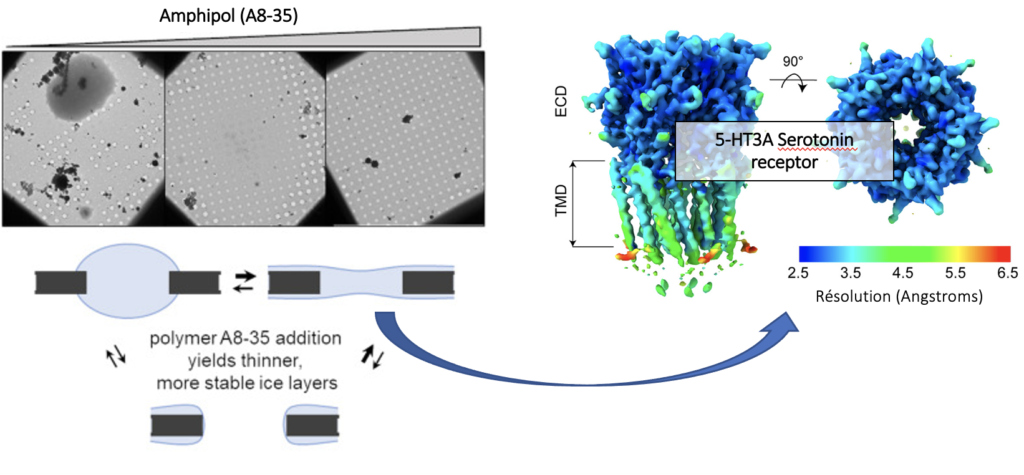
Cryo electron microscopy (cryo-EM) has become an effective and straightforward approach to determine the structure of macromolecules in solution, trapped within a thin film (a few tens of nanometres) vitrified by quenching at low temperature. Obtaining homogeneous films of optimal quality is still poorly controlled and reproducible, especially in the case of membrane proteins requiring the presence of detergents.
A multidisciplinary team including biophysicists, microscopists and soft matter physicists from the MMOI and SOBIO teams at LPS, IBS (Grenoble) and the Laboratoire de Biologie Physico-Chimique des Protéines Membranaires (IBPC, Paris) has undertaken an analysis of the physico-chemical mechanisms at work during cryo-EM thin film formation in order to rationalise their preparation. We thus analysed the physico-chemical properties of solutions containing detergents or amphipols – amphiphilic polymers widely used for the purification of membrane proteins – in relationship with the characteristics of vitrified thin films. We demonstrated a correlation between stability, dynamic surface tension and film quality, which now allows us to optimize thin film preparation in a reproducible manner.
This study also demonstrates a new aspect of the potential of amphipols for the study of membrane proteins, with better control of ice thickness, limited protein adsorption at interfaces, a more homogeneous distribution and more isotropic orientation of the proteins, which are optimal conditions for structure determination at high resolution. This has enabled improved imaging of a model membrane protein, the mammalian serotonin 5-HT3A receptor.
REFERENCE
Michon, B., López-Sánchez, U., Degrouard, J., Nury, H., Leforestier, A., Rio, E., Salonnen, A., & Zoonens, M. (2023). Role of surfactants in electron cryo-microscopy film preparation. Biophysical Journal, doi.org/10.1016/j.bpj.2023.04.016
https://authors.elsevier.com/c/1h2UC1SPT42Kt
Contact : amelie.leforestier@universite-paris-saclay.fr ou zoonens@ibpc.fr
